Каноническое право: пути служения. Сравнительно-правовые очерки - [92]
A similar approach is visible in the canon law of the Early Church – as far as modern historical science allows us to consider as the very initial “law” of the Church such sources like the Didache, the Didascalia: the sources are very didactive, teaching by its nature and content. And though later the canons of the Church councils are more authoritative in style, they still contain brief references to the teaching seeds upon which they are based, but even more than that – the canons of the Councils are accompanied in the course of the historical development of Canon law by the Rules of the Holy Fathers, which is actually a canonical expression of their teaching as the Church scholars, both in substance and in style.
After the end of the “Councils’ era” the teaching authority paradigm continues:
– as a “symphony” of the Emperors’ legislation on Church matters (“authority” aspect) and the Rules of the Holy Fathers (“teaching” aspect) in the East, and
– as the Popes’ decretals in the West – indeed, the decretals are the source of canon law combining in one the teaching and authority elements due to the mere fact that the popes themselves were combining these two elements in the political history of Western Europe.
In other words, if viewed through the prism of the teaching-authority paradigm the “difference” in the sources of Canon law is but different ways of expressing the same common feature of the Canon law as a religious legal system in a different social and political environment. Thus, there is no reason for the Eastern Church to blame the West for “papal dictatorship”, as well as there is no reason for the Western Church to blame the East for caesaropapism – both Churches were doing a similar job using different tools available in different historical circumstances.
Chapter one deals with the laity, which reflects the growing recognition by the Church authorities of the role of the lay Christian faithful in the Church (unlike it was, e. g., in the Code of Canon law of 1917). In substance the first chapter of this book is the discourse on the canon law of marriage, but it is presented as the most essential lay ministry in the Church.
The reason for such an approach is that oftentimes in our modern world marriage is seen as one of the basic human rights. But the core of the matter is that in the human society the human right makes sense only in so far as it is at the same time the obligation, the possibility to serve the other person and the society as a whole. Thus, this basic human right is not to marry to satisfy one’s own needs, but to make a choice: in which way the human being is going to serve the purpose of his or her life in this world.
Marriage – and thus creation of the mystical body of Jesus in the home church is viewed as one of such choices for a Christian faithful. In this sense marriage is presented as a way of the ministry of a lay Christian faithful, not as just a satisfaction of a basic human right (oftentimes understood, to tell the truth, as physiological basic right).
With this understanding the book explains the canons on marriage in the Catholic tradition – i. e. in the Code of Canon Law of the Roman Catholic Church, in the Code of Canons of the Eastern Churches, and in the Orthodox tradition presented by the canon law of the Russian Orthodox Church.
While presenting such a sensitive issue as possibility to terminate the marriage bond the book is not stressing the difference between the Catholic and Orthodox approaches to the question of divorce but explains this difference as different tools used to protect the same values in different social and psychological realities. Indeed, though on the first approach the positions of the Roman Catholic and Russian Orthodox Churches on the possibility of divorce seem completely different, the basic values of marriage as partnership of the whole life remain the same for both traditions.
Chapter two is devoted to the ministry of the clergy. The number of topics is rather traditional and includes such themes as impediments to the priesthood, the rules on formation of the clergy, the canonical status of the clergy.
This chapter also deals with the sacred orders and hierarchy of the clergy, describing the traditional three-level structure (deacons, presbyters, bishops) in a historical and modern canonical context.
The philosophy of the chapter is based on understanding the clergy as the people who selected such a way of ministry, which means complete devotion to the service of the people. The differences in legal status, discipline, and even in such an extreme (under a traditional approach) difference as celibacy versus possibility of a married clergy appears not so contradictory to each other if viewed in the light of different ways to be completely devoted to the service of the people which is, again, the main earthly feature of the priesthood from the Old Testament tradition.
Chapter three is devoted to the ministry of the monks or religious. It describes the canonical regulation of such a special ministry in a rather brief way. The two main reasons for that brevity are: (i) a broad variety of monastic traditions in the Christian West does not allow detailed description in a book of such a size, and (ii) the mystic core of the monastic life is hardly subject to a canonical regulation comparable to the regulation of, e. g., the life of the clergy.
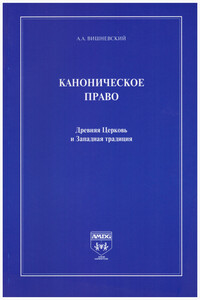
В основу книги легли лекции, прочитанные автором в ряде учебных заведений. Автор считает, что без канонического права Древней Церкви («начала начал»)говорить о любой традиции в каноническом праве бессмысленно. Западная и Восточная традиции имеют общее каноническое ядро – право Древней Церкви. Российскому читателю, интересующемуся данной проблематикой, более знакомы фундаментальные исследования церковного права Русской Православной Церкви, но наследие Западного церковного права продолжает оставаться для России terra incognita.
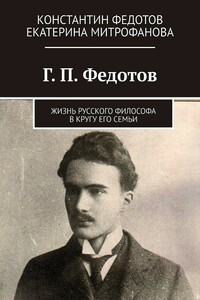
Книга, которая в настоящий момент находится перед вами, уникальна. Её отличие от других биографических работ о русском философе, религиозном мыслителе и публицисте Г. П. Федотове (1886–1951) заключается прежде всего в том, что её автором является один из немногих живущих ныне кровных родственников самого Георгия Петровича — внук его брата, Бориса Петровича — Константин Борисович Федотов. Соавтором выступает жена Константина Борисовича — писательница и биограф Екатерина Борисовна Митрофанова.
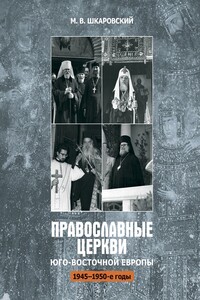
Предлагаемое читателю издание посвящено богатой и насыщенной важными событиями истории Православных Церквей Юго-Востока Европы в первое десятилетие после окончания Второй мировой войны. Эти годы стали заметными в истории целого ряда Поместных Православных Церквей Балканского полуострова. Большинство из них: Сербская, Болгарская Румынская, Албанская Церкви были вынуждены существовать в условиях возникших социалистических режимов и испытывать на себе различные стеснения, а порой и гонения. Во второй половине 1940-х гг.
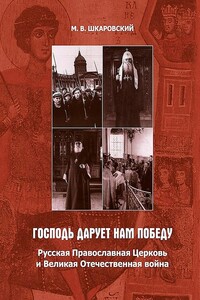
Предлагаемое издание посвящено богатой и драматичной истории Православных Церквей Юго-Востока Европы в годы Второй мировой войны. Этот период стал не только очень важным, но и наименее исследованным в истории, когда с одной стороны возникали новые неканоничные Православные Церкви (Хорватская, Венгерская), а с другой — некоторые традиционные (Сербская, Элладская) подвергались жестоким преследованиям. При этом ряд Поместных Церквей оказывал не только духовное, но и политическое влияние, существенным образом воздействуя на ситуацию в своих странах (Болгария, Греция и др.)
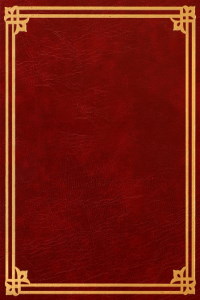
Как сформировались основные мировые религии. Почему их ранняя история тщательно замалчивается. Что будет если эту историю восстановить.
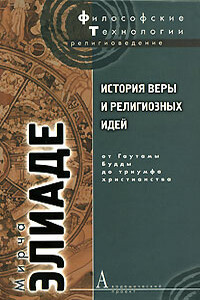
Данный труд является классическим образцом исследования в области истории религии. Религиозные идеи представлены здесь не только в хронологическом порядке, но и объединены единым пониманием многообразия религиозной жизни всех культур и континентов. Элиаде виртуозно владеет методами сравнительной антропологии и демонстрирует общие тенденции в развитии религиозных идей.Книга посвящена самому драматическому и важному периоду в мировой истории религий. Ее заголовок, естественно, не охватывает экуменической широты того материала, который изложен в книге: древний Китай и эллинистический Египет, европейские варвары (кельты и германцы) и иранский дуализм — в пятнадцати главах этой книги, кажется, уместилось все богатство религиозного развития Старого Света.

В книге рассказывается история главного героя, который сталкивается с различными проблемами и препятствиями на протяжении всего своего путешествия. По пути он встречает множество второстепенных персонажей, которые играют важные роли в истории. Благодаря опыту главного героя книга исследует такие темы, как любовь, потеря, надежда и стойкость. По мере того, как главный герой преодолевает свои трудности, он усваивает ценные уроки жизни и растет как личность.
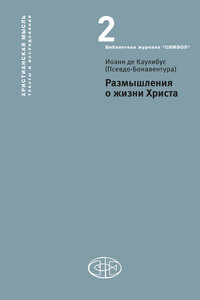
«Размышления о жизни Христа» (Meditaciones vite Christi), сочинение XIV века, которое во многих рукописях приписывается святому Бонавентуре, вероятно, написано францисканцем Иоанном де Каулибусом. Это первая всеобъемлющая биография Христа, содержащая регулярные и обширные вставки неевангельского повествовательного материала. «Размышления» позволяют читателю проникнуть в новый мир радости и любви, пробуждая в них интерес ко всему скромному, смиренному и прекрасному; они говорят о несказанном таинстве любви, которое открылось в простой, но возвышенной жизни Иисуса и Марии. Критический текст опубликован на латинском языке издательством Brepols в серии «Corpus Christianorum» в 1997 году.